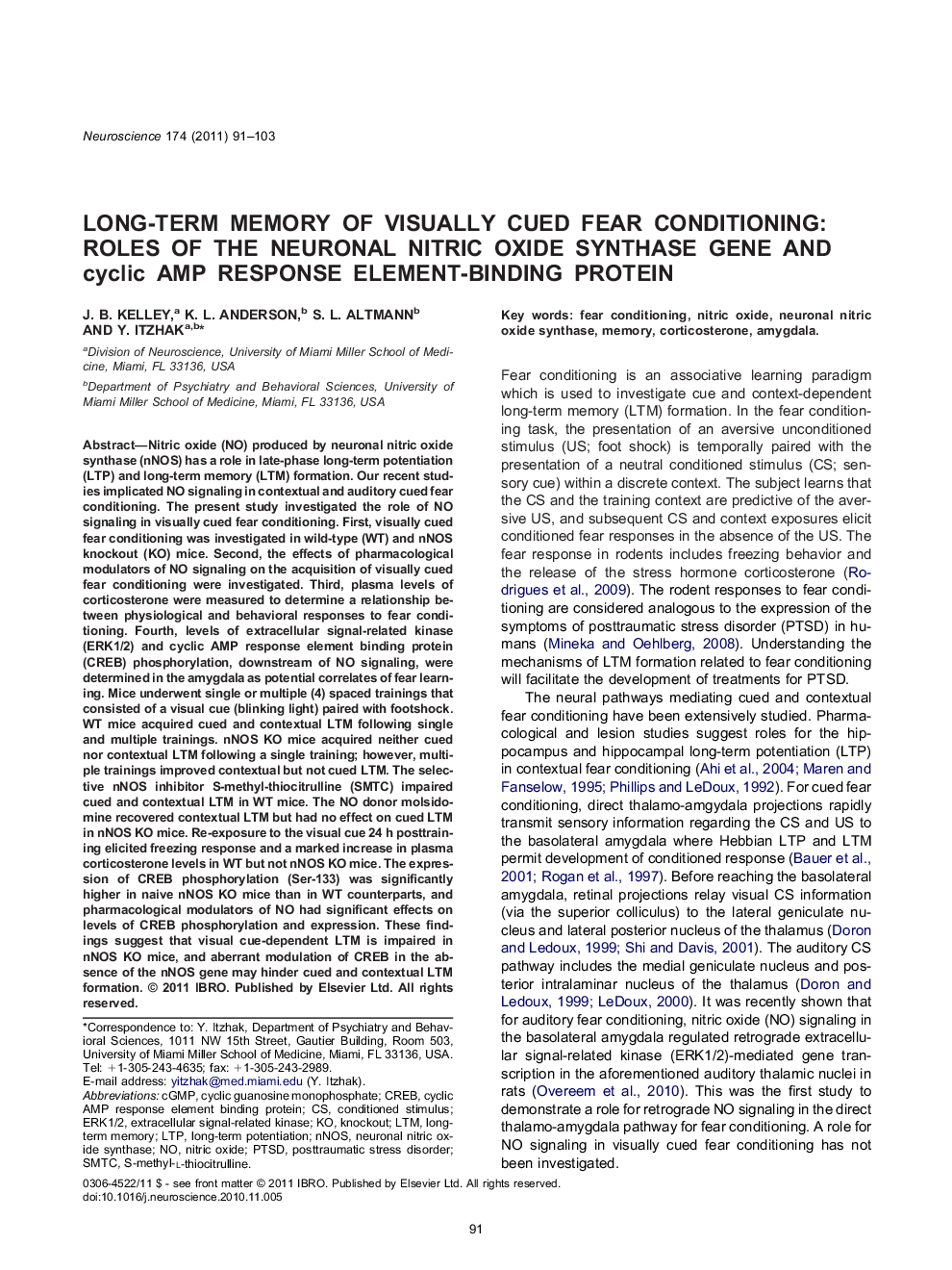| کد مقاله | کد نشریه | سال انتشار | مقاله انگلیسی | نسخه تمام متن |
|---|---|---|---|---|
| 4339221 | 1614902 | 2011 | 13 صفحه PDF | دانلود رایگان |

Nitric oxide (NO) produced by neuronal nitric oxide synthase (nNOS) has a role in late-phase long-term potentiation (LTP) and long-term memory (LTM) formation. Our recent studies implicated NO signaling in contextual and auditory cued fear conditioning. The present study investigated the role of NO signaling in visually cued fear conditioning. First, visually cued fear conditioning was investigated in wild-type (WT) and nNOS knockout (KO) mice. Second, the effects of pharmacological modulators of NO signaling on the acquisition of visually cued fear conditioning were investigated. Third, plasma levels of corticosterone were measured to determine a relationship between physiological and behavioral responses to fear conditioning. Fourth, levels of extracellular signal-related kinase (ERK1/2) and cyclic AMP response element binding protein (CREB) phosphorylation, downstream of NO signaling, were determined in the amygdala as potential correlates of fear learning. Mice underwent single or multiple (4) spaced trainings that consisted of a visual cue (blinking light) paired with footshock. WT mice acquired cued and contextual LTM following single and multiple trainings. nNOS KO mice acquired neither cued nor contextual LTM following a single training; however, multiple trainings improved contextual but not cued LTM. The selective nNOS inhibitor S-methyl-thiocitrulline (SMTC) impaired cued and contextual LTM in WT mice. The NO donor molsidomine recovered contextual LTM but had no effect on cued LTM in nNOS KO mice. Re-exposure to the visual cue 24 h posttraining elicited freezing response and a marked increase in plasma corticosterone levels in WT but not nNOS KO mice. The expression of CREB phosphorylation (Ser-133) was significantly higher in naive nNOS KO mice than in WT counterparts, and pharmacological modulators of NO had significant effects on levels of CREB phosphorylation and expression. These findings suggest that visual cue-dependent LTM is impaired in nNOS KO mice, and aberrant modulation of CREB in the absence of the nNOS gene may hinder cued and contextual LTM formation.
Research Highlights▶Genetic and pharmacological investigations showed that visually cued fear conditioning is nNOS-dependent. ▶There is a positive correlation between the physiological (corticosterone) and behavioral (freezing) responses to visual aversive CS. ▶Naïve nNOS KO mice have elevated basal expression pCREB. ▶Modulations of NO signaling and pCREB are implicated in visual cue-dependent long-term memory.
Journal: Neuroscience - Volume 174, 3 February 2011, Pages 91–103